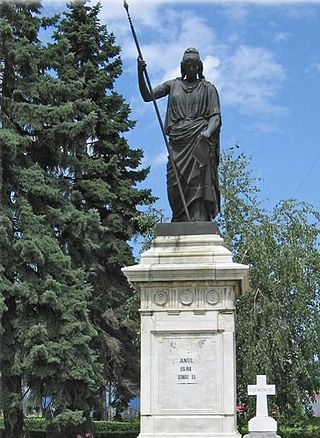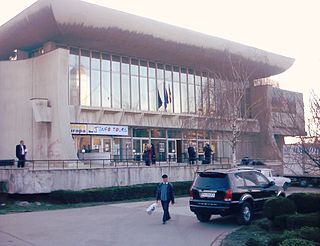Self-guided Sightseeing Tour #1 in Ploiești, Romania
Legend
Tour Facts
2 km
21 m
Experience Ploiești in Romania in a whole new way with our free self-guided sightseeing tour. This site not only offers you practical information and insider tips, but also a rich variety of activities and sights you shouldn't miss. Whether you love art and culture, want to explore historical sites or simply want to experience the vibrant atmosphere of a lively city - you'll find everything you need for your personal adventure here.
Individual Sights in PloieștiSight 1: Casa compozitorului Paul Constantinescu
The "Paul Constantinescu" Memorial Museum is a county museum in Ploiesti, located in Str. Nicolae Bălcescu nr. 15. The establishment of this important establishment of musical culture is due, first of all, to the sister-in-law of the composer Paul Constantinescu, eng. chemist Eleonora Constantinescu who, in the summer of 1993, donated to the state, respectively to the Prahova County Museum of History and Archaeology, the building in which she lived and a valuable patrimony including a rich collection of books, pieces of furniture and documents about the life and work of the composer, who lived part of his life in this edifice.
Sight 2: Gimnaziul de băieți „Sfinții Petru și Pavel”
The Prahova County Museum of History and Archaeology is a county museum in Ploiesti, located in Toma Caragiu Street no. 10.
Wikipedia: Muzeul Județean de Istorie și Arheologie Prahova (RO), Heritage Website
Sight 3: Sinagoga Beth Israel
The Beth Israel Synagogue is a Jewish place of worship in Ploiesti, located on Basarabi Street no. 12, in the central area of the city. The edifice was inaugurated in April 1912.
Sight 4: Personajele din schita „D-l Goe”
Mr. Goe... is a sketch by Ion Luca Caragiale. It was published in the volume "Moments and Sketches".
Sight 5: Acvariul
Motto: "The land is not an inheritance from our parents, but a loan from our children"
Wikipedia: Muzeul Județean de Științele Naturii „Prahova” (RO), Website
Sight 6: Halele Centrale

The Central Halls of Ploiesti are one of the symbols of Ploiesti, a historical monument with the code PH-II-m-A-16306.
Sight 7: Catedrala Sfântul Ioan Botezătorul

The Cathedral of Saint John the Baptist, located on Republicii Boulevard no. 12, is the most imposing church in Ploiesti and one of the main architectural landmarks of the municipality. The cathedral's bell tower is included on the list of historical monuments in Prahova County with the code number LMI PH-II-m-A-16261.
Wikipedia: Catedrala Sfântul Ioan Botezătorul din Ploiești (RO)
Sight 8: Statuia Libertății
The Statue of Liberty is one of the oldest statues in Ploiesti. It has been declared a historical monument and is inscribed in the List of Historical Monuments with code LMI PH-III-m-A-16868 under the name Statue of Liberty.
Wikipedia: Statuia Libertății din Ploiești (RO), Heritage Website
Sight 9: Casa de Cultură a Sindicatelor din Ploiești
The work, designed in May 1968, was executed according to the plans of the architect Gheorghe Dorin by T.C.M. Prahova, and was completed in May 1972. It has hosted numerous political or cultural meetings, symposia and conferences, performances, patronizes the "Chindia" Folklore Ensemble, the "Pastel" Plastic Circle, activated the "Ioan Cristu Danielescu" Choir, literary and ballet circles, etc.
Wikipedia: Casa de Cultură a Sindicatelor din Ploiești (RO), Website
Share
How likely are you to recommend us?
Disclaimer Please be aware of your surroundings and do not enter private property. We are not liable for any damages that occur during the tours.
GPX-Download For navigation apps and GPS devices you can download the tour as a GPX file.


-Botanical-Garden.jpg)

